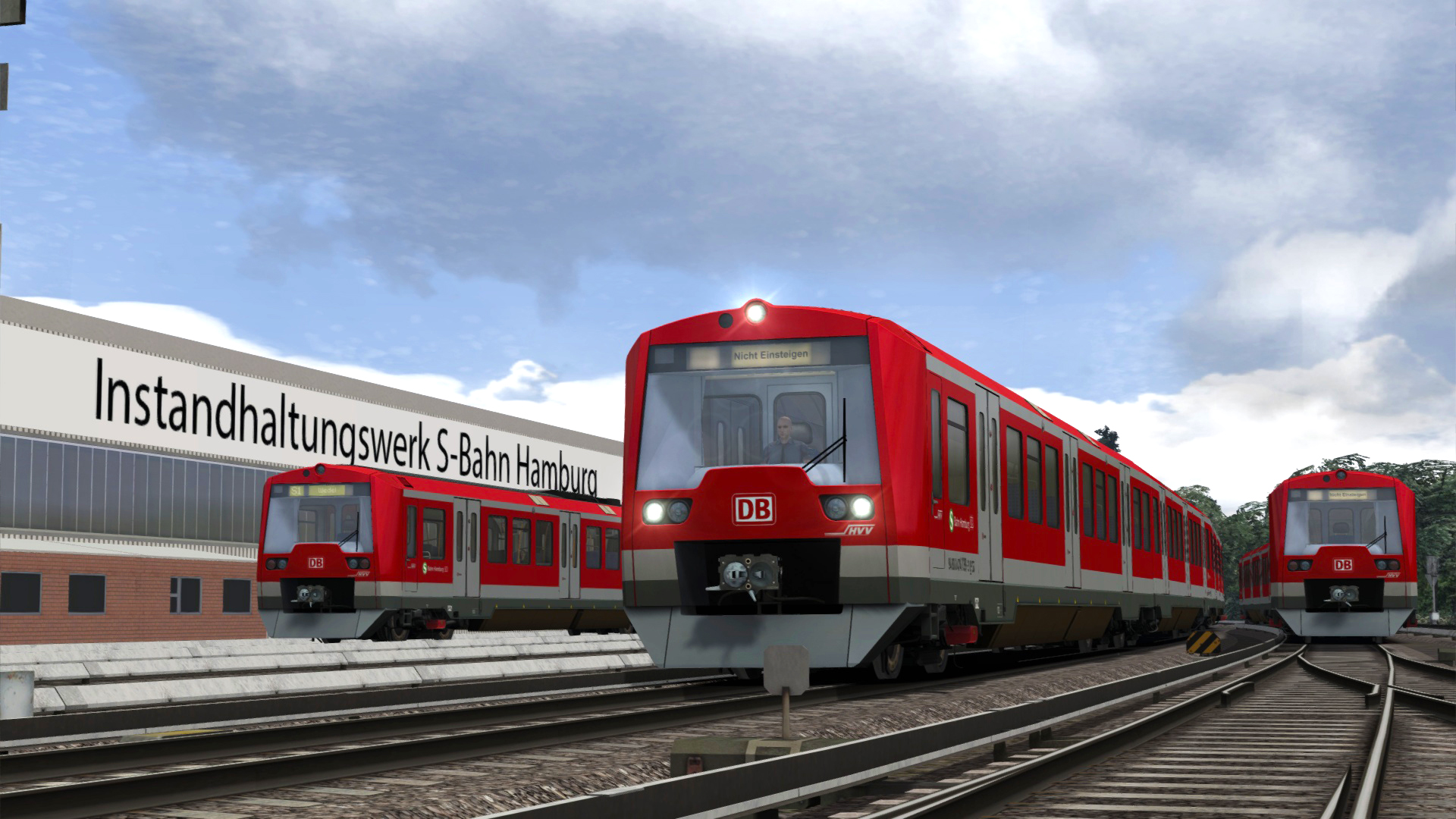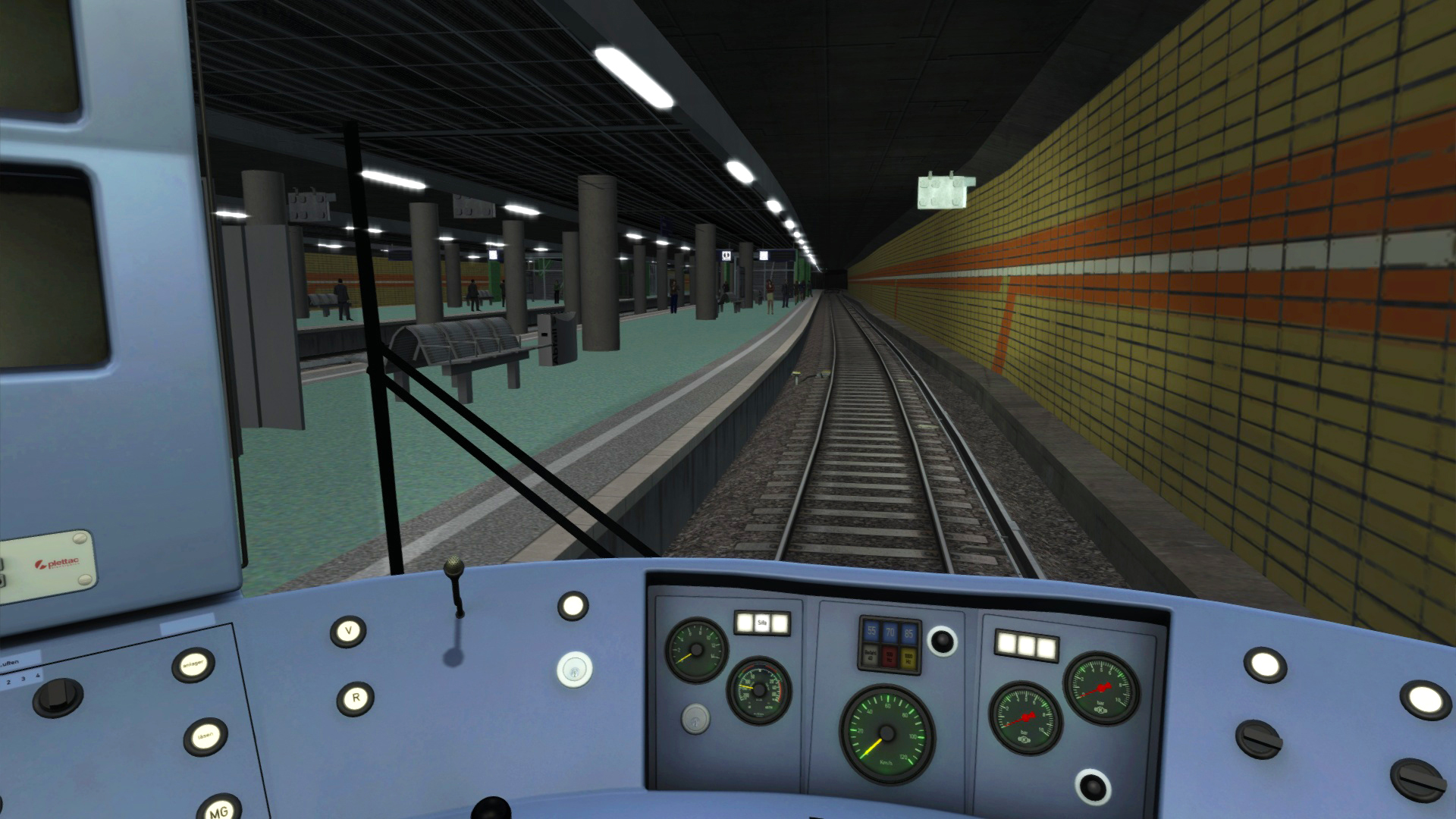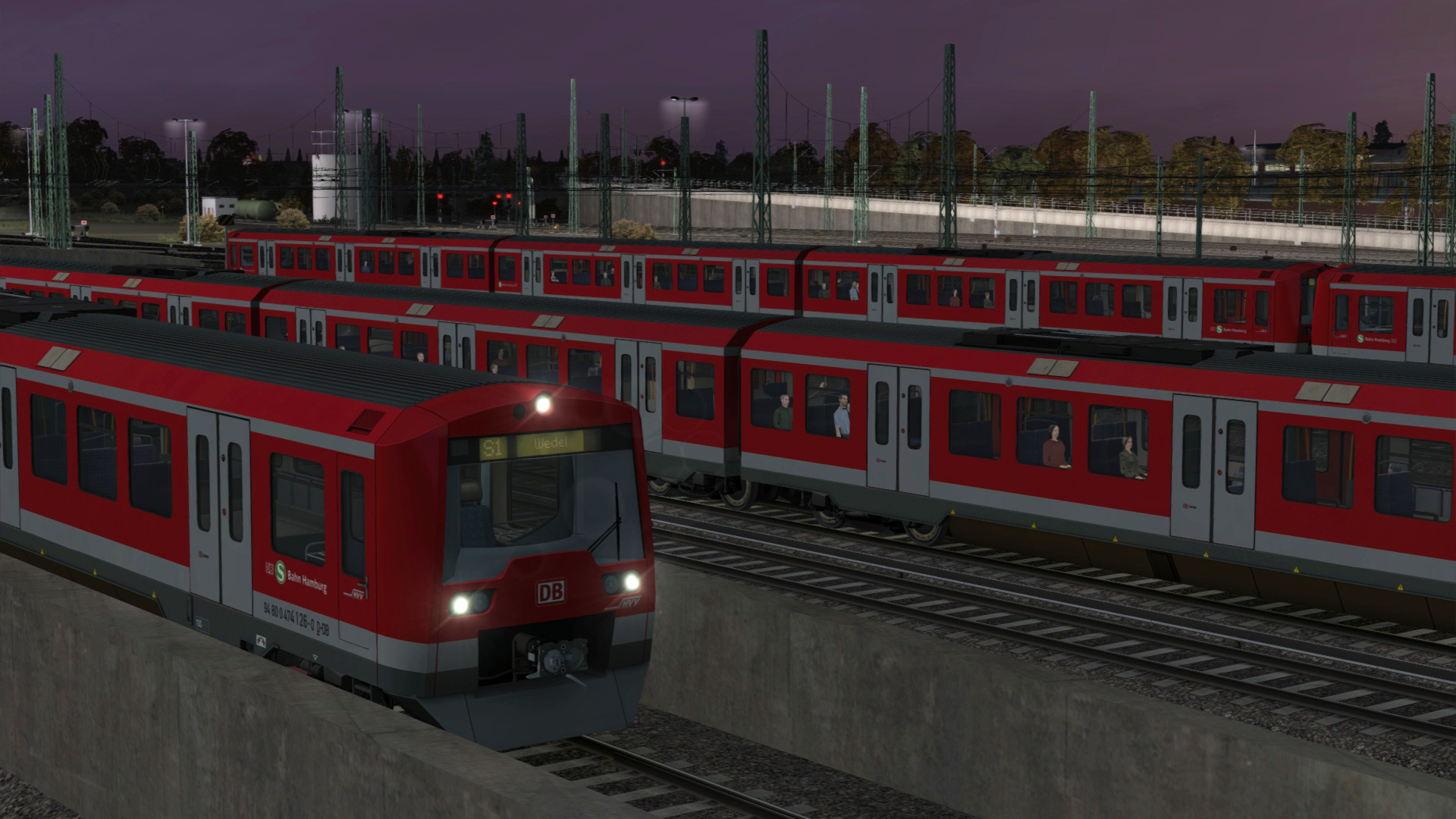Train Simulator: Hamburg S1 S-Bahn Route Add-On
The S1 Line of the Hamburg S-Bahn is the city’s second largest, initially traversing the outskirts before diving into the heart and serving many locations including the nearby international airport. This historic line originated in the early 1900s, and still aids in the movement of people day in and day out. Take command of the ever-busy ‘Mass Transit Metro’ over the Hamburg S1 S-Bahn for Train Simulator!
Life, for what would become known as the Hamburg S-Bahn, began in 1906 with the opening of Hamburg Hbf where steam hauled services would run between Blankenese and the city itself. Despite the railway tracks in this area were not exactly ‘new’, this is the first time that they had been used in ‘rapid-transit’ style operations; as such, the new usage came under the name of the Hamburg-Altona Urban and Suburban Railway.
Extensions of the suburban service quickly followed, allowing connections with Hasselbrook and Ohlsdorf on the eastern face of Hamburg. It was also around this time when the decision was taken to electrify the line, by 1907, electric trains were utilising the, once current, overhead catenary throughout the city. It was at this point, when electricity was the source of motive power that the line fell into what could be categorised as an S-Bahn today. It would not be until 1924 that the Hamburg S-Bahn was so-named however, this occurred once the old Alster Valley Railway to Poppenbüttel was acquired and the route to Wedel was on-lease for suburban use.
By the 1930s, it was decided that the Hamburg S-Bahn could benefit from re-electrification, this time however, using 1200 V third rail. Similar in most respects to the Berlin S-Bahn, the introduction of third rail would provide more versatile power needs as trains and services got faster. The under-side contact method was chosen as standard, and the line saw a whole 450 V increase of Berlin’s offering, to further improve acceleration and performance. By 1939, all overhead was abandoned and third rail dominated the line. It would not be until 1959 that the line to Wedel was acquired and electrified.
In 1965, the Hamburg S-Bahn numbering scheme came into play and saw Wedel – Poppenbüttel, the second longest S-Bahn route, become known as the S1 Line. While the line has held a key importance throughout its life, be it steam powered, overhead-populated or otherwise, it was not until 2008 that the mere purpose of the line would change for the busier. An extension was built out of Ohlsforf station and headed westbound, only one station was on the new spur – Hamburg International Airport, the Airport Shuttle was born. Services would now split to serve Poppenbüttel and the Airport simultaneously, and naturally, a connection with the Airport has seen the S1 become even more vital to the growth of business and tourism within and surrounding Hamburg.
The Hamburg S1 S-Bahn features the 45 km route from Wedel to Poppenbüttel and Hamburg Airport as an extension to the existing 64 km Hamburg Lübeck Railway (also included in this single route totaling more than 100km of German railway).
The DB BR 474 Plus EMU is also included as key modern traction to the Hamburg S1 line; the traction included in Hamburg-Lübeck, DB BR 218, DB BR 145, DB BR 294 and associated rolling stock.
Career Scenarios:
More scenarios are available on Steam Workshop online and in-game. Train Simulator’s Steam Workshop scenarios are free and easy to download, adding many more hours of gameplay. With scenarios being added daily, why don’t you check it out now!
Life, for what would become known as the Hamburg S-Bahn, began in 1906 with the opening of Hamburg Hbf where steam hauled services would run between Blankenese and the city itself. Despite the railway tracks in this area were not exactly ‘new’, this is the first time that they had been used in ‘rapid-transit’ style operations; as such, the new usage came under the name of the Hamburg-Altona Urban and Suburban Railway.
Extensions of the suburban service quickly followed, allowing connections with Hasselbrook and Ohlsdorf on the eastern face of Hamburg. It was also around this time when the decision was taken to electrify the line, by 1907, electric trains were utilising the, once current, overhead catenary throughout the city. It was at this point, when electricity was the source of motive power that the line fell into what could be categorised as an S-Bahn today. It would not be until 1924 that the Hamburg S-Bahn was so-named however, this occurred once the old Alster Valley Railway to Poppenbüttel was acquired and the route to Wedel was on-lease for suburban use.
By the 1930s, it was decided that the Hamburg S-Bahn could benefit from re-electrification, this time however, using 1200 V third rail. Similar in most respects to the Berlin S-Bahn, the introduction of third rail would provide more versatile power needs as trains and services got faster. The under-side contact method was chosen as standard, and the line saw a whole 450 V increase of Berlin’s offering, to further improve acceleration and performance. By 1939, all overhead was abandoned and third rail dominated the line. It would not be until 1959 that the line to Wedel was acquired and electrified.
In 1965, the Hamburg S-Bahn numbering scheme came into play and saw Wedel – Poppenbüttel, the second longest S-Bahn route, become known as the S1 Line. While the line has held a key importance throughout its life, be it steam powered, overhead-populated or otherwise, it was not until 2008 that the mere purpose of the line would change for the busier. An extension was built out of Ohlsforf station and headed westbound, only one station was on the new spur – Hamburg International Airport, the Airport Shuttle was born. Services would now split to serve Poppenbüttel and the Airport simultaneously, and naturally, a connection with the Airport has seen the S1 become even more vital to the growth of business and tourism within and surrounding Hamburg.
The Hamburg S1 S-Bahn features the 45 km route from Wedel to Poppenbüttel and Hamburg Airport as an extension to the existing 64 km Hamburg Lübeck Railway (also included in this single route totaling more than 100km of German railway).
The DB BR 474 Plus EMU is also included as key modern traction to the Hamburg S1 line; the traction included in Hamburg-Lübeck, DB BR 218, DB BR 145, DB BR 294 and associated rolling stock.
Included Locomotives & Rolling Stock
- DB BR 474 Plus in Deutsche Bahn Traffic Red Livery
- DB BR 218 in Deutsche Bahn Traffic Red Livery
- DB BR 145 in Deutsche Bahn Traffic Red Livery
- DB BR 294 in Deutsche Bahn Traffic Red Livery
- DB Doppelstockwagen in Deutsche Bahn Traffic Red Livery
Included Scenarios
The Hamburg S1 S-Bahn Route Add-on includes seven challenging career scenarios and three Railfan Mode scenarios:Career Scenarios:
- Touring the S1
- Hitting the Hamma
- Oktoberfest Contribution
- Overnight to Altona
- Hansa Time
- Just in Time for Christmas
- Out of Stock
More scenarios are available on Steam Workshop online and in-game. Train Simulator’s Steam Workshop scenarios are free and easy to download, adding many more hours of gameplay. With scenarios being added daily, why don’t you check it out now!
Key Features
- 45 km (27 mile) Complete S1 route from Wedel to Poppenbüttel (via Hamburg Hbf) & Hamburg Airport
- Includes the existing 64 km (40 mile) Hamburg-Lübeck Railway – making 108 km (67 miles) in total
- Features the DB BR 474 Plus, DB BR 218, DB BR 145, DB BR 294 and associated rolling stock
- Includes the bonus S11 loop (without scenery) for appropriate operation of AI trains
- 7 career scenarios featuring the iconic BR 474 Plus
- 3 Railfan Mode Scenarios
- Quick Drive compatible
- Download size: 218.3 mb
DB and the DB logo are trademarks of Deutsche Bahn AG. All rights reserved. All other trademarks are the property of their respective owners.







